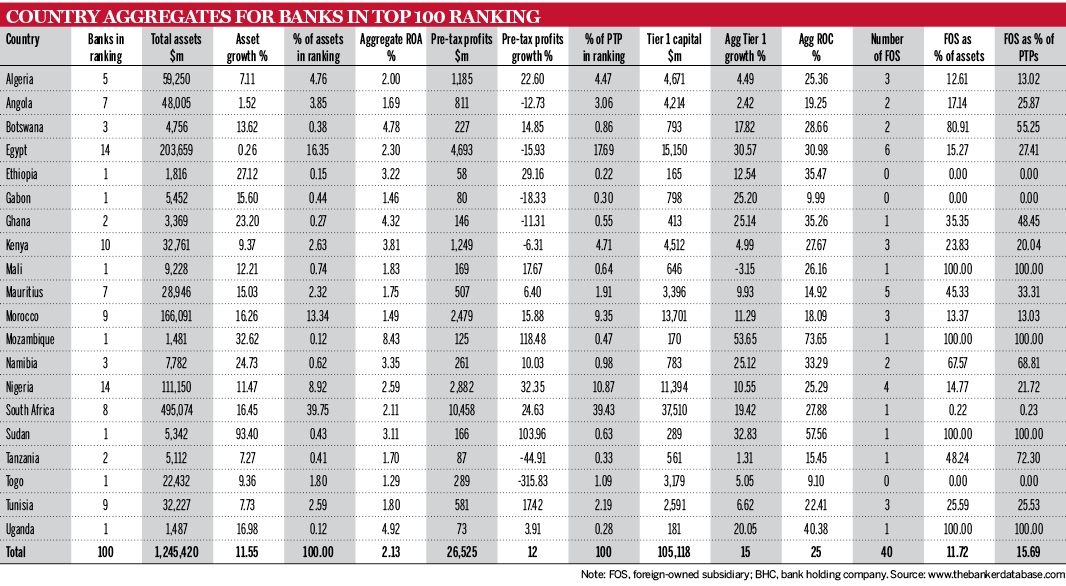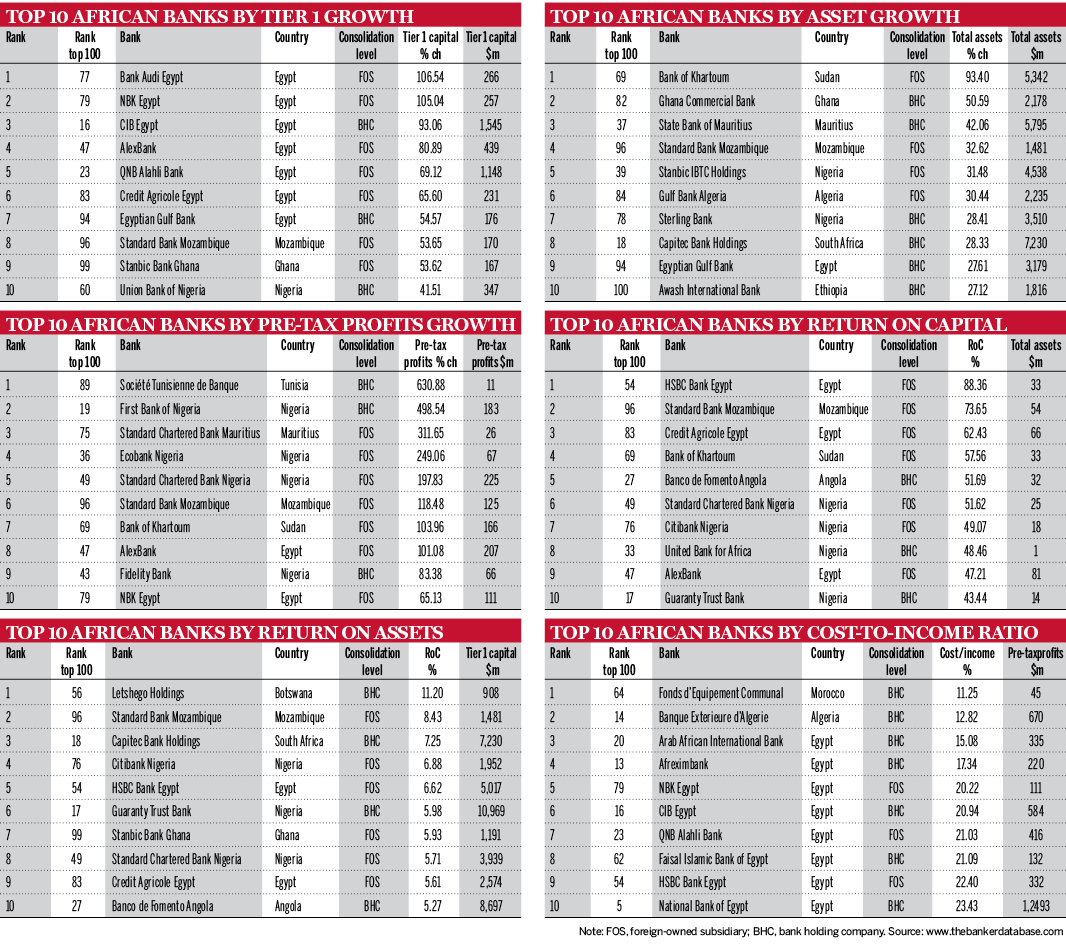The Banker's Top 100 African Banks ranking 2019: a brighter picture
African banks enjoyed an improved 2017 on the whole, according to The Banker's Top 100 African Banks ranking, with good news coming from Nigeria, South Africa, Botswana, Namibia and Ghana. James King reports.
The Banker’s Top 100 African Banks ranking for 2019 represents an impressive return to form for the region’s lenders.
After several years of solid – if relatively sluggish – growth, it appears that African banks are well and truly hitting their stride. By almost every metric, from profitability to asset growth, they have improved on their efforts in the recent past.
On the up
This partly reflects the continent’s improving economic outlook over the review period. In 2017, economic growth across sub-Saharan Africa hit 2.5%, according to the World Bank, a marked improvement from 2016 when it expanded by less than 2%. But it also shows that the continent’s lenders have adapted to a generally less supportive operating environment.
This has been achieved through cost cutting, the streamlining of business procedures and the adoption of higher levels of automation, among other measures. It is also a function of the fact that many African banks have refined their strategies in recent years.
For some, this has meant withdrawing from difficult or unprofitable markets. For others, it has led to the expansion of their presence across their domestic or regional operating footprint. Collectively, these decisions are the basis for the strong results in the 2019 ranking.
Over the 2017 review period, total assets expanded by 11.55% after barely reaching positive territory in the 2018 ranking with 0.1% growth. Despite this strong performance, African banks’ return on assets remained steady between the yearly rankings at 2.13%. Meanwhile, pre-tax profits surged by 12%, compared with a flat 0% effort in the 2018 edition. Tier 1 capital, meanwhile, grew by 15% in the 2019 ranking, marking a significant improvement from the 2% registered in 2018. African banks’ return on capital was a strong 25% despite the level of Tier 1 capital growth.
Big hitters
At the country level, the 2019 rankings produced a number of standout performers. Markets with the most diversified mix of lenders, including Nigeria, South Africa, Kenya, Mauritius and Morocco, among others, all performed well. South African banks, for instance, not only registered strong asset growth, at more than 16%, but they also performed well in terms of their return on assets, which came in just shy of the regional average at 2.11%.
Meanwhile, the continent’s other big-hitting economy, Nigeria, saw its banks post asset growth of 11.47% as return on assets hit 2.59%. Elsewhere, banks from Morocco and Mauritius enjoyed strong asset growth, which came in at 16% and 15%, respectively, though their return on assets were lower than the average at 1.49% and 1.75%.
Beyond Africa’s largest banking markets, some smaller jurisdictions also performed well. They include Botswana, which saw its banks post aggregate asset growth of 13.62% as their return on assets easily outperformed the regional average at 4.78%. Namibian banks enjoyed a similar performance. Asset growth for the country’s lenders was a massive 24.73% as their aggregate return on assets hit 3.35%. Meanwhile, Ghana, one of the continent’s fastest growing economies, also made a strong impression on the ranking. Asset growth from the country’s lenders was more than 23%, while their return on assets came in at 4.32%.
Meanwhile, in the north of the continent, lenders in neighbouring Tunisia and Algeria both performed admirably. In Algeria, banks’ posted a 7% increase to their total assets. Although this falls below the regional average, it represented a significant improvement from the 2018 ranking where total assets fell by 0.63%. Return on assets was also healthy at 2%, up from the 1.73% registered in the 2018 edition. In Tunisia, asset growth hit a similar level at 7.73% but the country’s banks posted a less impressive return on assets of 1.8%.
Setting a standard
In terms of individual performance, Africa’s largest banks have continued to do well. Besides strong asset growth, most of the region’s lenders have increased their Tier 1 capital positions. The continent’s biggest bank, Standard Bank, saw its Tier 1 capital grow by 17.41% over the review period. FirstRand, Absa Group and Nedbank, the other South African lenders scooping a respective second, third and fourth place on the main ranking, grew Tier 1 capital by 22%, 19% and 19%. Elsewhere in the top 10 banks by Tier 1 capital, two Moroccan institutions, Attijariwafa and Groupe Banques Populaire, registered an increase of 6.9% and 15.3%, respectively.
These performances, among others, highlight the healthy rate of growth enjoyed by most of the continent’s leading banks. That the picture for African banks’ expansion of assets, profitability and Tier 1 capital is so diversified is a testament to the continent’s improving fortunes over the review period, as well as the mature management strategies that many of these banks are executing.
Nevertheless, although Africa’s economic prospects are rosier, they remain sub-optimal. As global trade tensions increase and uncertainty looms over the outlook for key commodity markets, it is not clear that a drastic improvement is on the horizon. As such, African lenders will increasingly rely on digital technology to optimise their businesses in what is already a highly innovative and tech-savvy sector. Watch this space.




